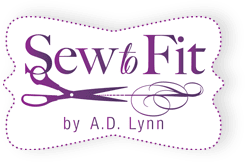

How To Trace Commercial Sewing Patterns
Happy Saturday!! I thought about you all when I had to copy a pattern that is out of print. I didn’t want to use up the pattern, so I traced it onto Swedish tracing paper in order to save the original for later use. Here is a quick tutorial on tracing patterns. Hope it’s useful.
Commercial “tissue paper” patterns are great to have when it comes to tracing off your size from the multi-size sheets. This is the only time having “thin” paper is a bonus–you will be more inclined to trace your size and protect the pattern for future use.
SUPPLIES: You will need only 3 items:
- Sharpie Fine Point Markers
- Tracing paper
- Commercial Sewing Patterns of course (mccalls, simplicity)
“Sharpie” fine point markers.
Sharpie is the only one that I have found to work as well as they do. I think it has something to do with the ink, but that is my guess, and it isn’t a scientific fact, just trust me on this, it works. Keep these points in mind
- Choose multiple colors for each different size you plan to use from any given pattern and stick with that color throughout.
- On multi-sized patterns, try to use one color consistently throughout the process from one pattern to another, as a means to color code your work. (pink= size 12, purple= size 14, orange= size 16, etc.) Because I use basic colors for pattern markings, alterations, and notes, I steer clear of using Black, Blue, Red, and sometimes Green for tracing.
- The lighter colors work best, the light color allows the original pattern markings to remain visible on the tissue, the lighter colors will do less damage to your patterns, and they still show through to your tracing paper just the same.
“Tracing Paper”
Make sure to use a light color paper suitable for receiving the ink transfer and for visibility. Keep these points in mind when selecting your paper:
- The lighter the marker you select, the lighter the paper should be that you select. I use “blue-dot” pattern paper or “Swedish” tracing paper. I have tried the art vellum as well, but I have found that the ink smears as I move around my work.
“Patterns to Transfer”
Any non-PDF pattern which has been commercially printed to tissue paper.
- This method has been proven to work with patterns made of the thin, non-waxed brownish tan tissue paper.
- The tissue from these patterns may have a slight “sheen” on the wrong side, and will have a non-wax smooth texture on the right side.
“I don’t know everything, but, I do know a lot about some things, so I’ll teach you a few things of what I do know.”
